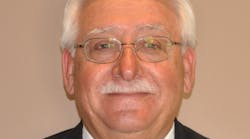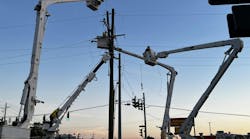One of Demetrios Tziouvaras’ favorite things about his job at SEL University is sharing his knowledge and experience with other engineers who are eager to learn the art and science of power system protection. He has spent most of his 35-year career working as a protection engineer, but when the opportunity to join SELU presented itself in 2013, he felt it was the right time in his career to share his utility and research experiences with other engineers.
As professor at SEL University, Tziouvaras teaches power system protection, symmetrical components and power system analysis. Occasionally, he teaches the SELU relay application courses. He is also working with Dr. Hector Altuve, the dean of SELU, to revamp PROT 407, one of the fundamental courses on "Transmission Line Protection.” The goal is to incorporate the latest SEL developments in transmission line protection, such as time domain, traveling wave protection and traveling wave fault location.
T&D World discussed Tziouvaras’ experience at PG&E and how he got into power system protection (he actually built a tube radio power supply for his father in Greece), as well as the importance of keeping up to date on protective relaying:
Q: How does experience help you in teaching at SEL University?
While I’ve spent most of my 35-year career working as a protection engineer, I’ve always enjoyed teaching. At SELU, I get to develop and teach power system protection courses while maintaining my involvement in research and development activities.
The expertise I developed over the years prepared me well for this position. When I first joined SEL in 1998, I was primarily focused on contributing to the design of advanced numerical relays through research on advanced protective relaying algorithms. Before that, I spent 18 years working for Pacific Gas and Electric Co. (PG&E) in San Francisco, where I was responsible for protection design standards, new technologies, substation automation, relay settings, relay operations analysis, and maintenance of protective relaying schemes for the 230 kV and 500 kV systems and the generation facilities. It’s fulfilling to now be able to share the things I learned from these work experiences with the other engineers in my classes.
Q: When and why did you decide to go into power systems?
I decided to study electronics during my last year of high school. Math and physics were my favorite subjects in school. When I learned about transformers in my high school physics class, I decided I would try to build one to replace the 90-volt batteries in my father's old tube radio, because he couldn’t find any replacement batteries to keep the radio operational and could not afford to buy a new one. I finished the radio power supply while attending university in Athens, Greece a couple of years later. My father was thrilled to be able to listen to the news again in the remote area of Greece where he lived.
Q: What courses/sessions have you presented in the past?
Over the years I have given lectures and taught short courses and seminars in protective relaying, digital relaying, and EMTP at the University of Illinois; California Polytechnic Institute; Sacramento State University; Georgia Tech; and at IEEE PES conferences.
Q: What’s the most important thing you’ve learned that you want to communicate to students or participants?
Technology is constantly changing, but the fundamentals of math and physics aren’t. My advice to students is to keep up with technology changes, but always go back to the fundamental principles and dig deeper into understanding the protection principles when solving a problem. Don’t always trust the results of computers. Walter Elmore, a protection guru, once said, "Accepting something the way it has always been done is not acceptable."
I also advise students to find a mentor to guide them and share his or her experiences. I was very fortunate to have as my mentor Dave Colwell, Manager of Power System Protection at PG&E. Dave patiently shared his experience and knowledge with me. He involved me in many interesting and challenging projects that broadened my knowledge and experience in the areas of power system protection, power system transients, and analysis of power system disturbances.
Q: Why is protective relaying important to the industry?
Protective relaying is the heart of electric energy systems and is applied to maintain a high degree of service continuity and personnel safety while minimizing equipment damage. The power system protection field is one of the most fascinating fields in electrical engineering. It’s the only field where an engineer will apply most of the electric engineering disciplines, including power engineering, digital electronics, signal processing, digital communications and control systems. Protection engineers must excel in a number of areas, including power system protection, analysis, modeling, transients, operation and equipment design.
Q: What do you like to do in your spare time?
I spend most of my spare time with my family and friends. I have been blessed with a beautiful and understanding wife, two wonderful children, and two loving grandchildren that fully complete my life. I also like to go horseback riding with my wife on the weekends. I occasionally like to prepare some nice Greek meals for my family and our friends.


